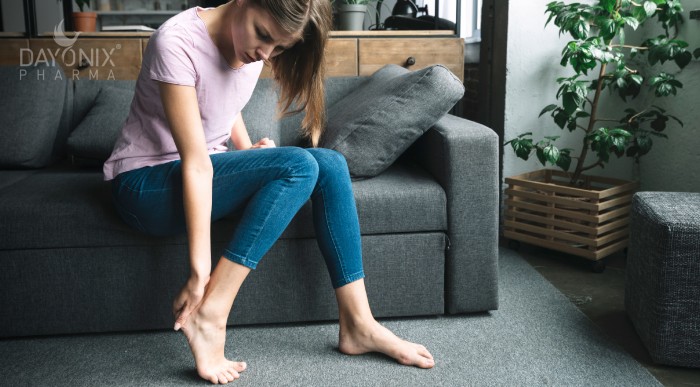
What Is Restless Leg Syndrome (RLS)?
January 21, 2020Are you bothered by strange and unpleasant sensations in your legs when you lie down or relax? Does it keep you awake at night? If yes, you may have Restless Leg Syndrome (RLS). This is a neurological disorder, which features leg pain and an irresistible urge to move them while resting and sleeping. The leg pain of RLS typically eases with motion of the legs and becomes more noticeable during the early evening or later at night. Symptoms may last from several minutes up to several hours and prevent you from getting enough sleep.
RLS can be primary or secondary. Dopamine disruption is believed to associate with primary restless leg syndrome. It is suggested that iron deficiency may cause RLS. Diabetes, rheumatoid arthritis, pregnancy, kidney failure, Parkinson’s disease, and iron deficiency are considered as the main causes, which contribute to this secondary RLS. Experts have discovered improving vitamin B12 and iron deficiencies, lifestyle changes, self-help remedies and sometimes meditation are beneficial to calm your pain and enjoy a peaceful, refreshing sleep.
Common signs and symptoms of restless leg syndrome
Varying in duration and severity, different symptoms such as pins and needles, an internal itch, a creeping or crawling sensation with an urge to move the legs are described by people with restless leg syndrome. In severe cases of RLS, you may experience symptoms in your arms as well as your legs. Although no cure has been found for primary RLS yet, there are some home remedies that you can try to help you manage your condition.
Lifestyle changes
It’s still a mystery to researchers what causes primary RLS, however a connection between your lifestyle and how frequently your symptoms occur is assumed. There are some lifestyle changes that you can make to help alleviate your symptoms.
Diet
Avoiding caffeine and alcohol before bedtime may help restless legs. Cut back on caffeine-containing products and alcohol for a few weeks to explore the results.
Smoking
Smoking may have an impact on sleeping patterns. If you find smoking makes your RLS symptoms worse, try to cut down or quit completely.
Exercise
According to the Restless Legs Syndrome Foundation, people with RLS who exercise moderately report a reduction in symptoms of around 40 percent. The exercise doesn’t have to be intense as it may make symptoms worse. Walking, jogging, or any variety of fitness will help your legs, and will improve your chances of sleeping.
Supplements
Some studies have indicated the connection between iron deficiency and RLS. Take best supplements of iron source and symptoms of restless leg syndrome may disappear.
RLS has also been associated with low levels of vitamins D, C, B12, and E.
Exhaustion tends to worsen symptoms of RLS, so it is vital to practice as much as possible to improve your night’s sleep condition. Go to bed at the same time every night and get adequate sleep.
The symptoms of RLS can range from irritating to very painful. Apply warm or cool packs on your legs to lessen your leg sensations. Taking a hot bath or massaging your muscles to get them to relax help to improve the condition too.
There are many home therapies and lifestyle changes you can make to help you deal with RLS. Be sure to work closely with your GP before taking any supplements or making any changes. They may consider drug therapy according to the severity of your symptoms.
Consult Your GP if you have restless leg syndrome
Continuous medication is recommended in patients who have severe symptoms lasting 3 nights each week. It is also important to find the underlying cause of secondary RLS and treat it.
The content of this blog is not intended to be a substitute for professional medical advice, diagnosis, or treatment. Always seek the advice of your physician or other qualified health professional regarding any medical condition. While every care is taken to ensure the accuracy of the information presented in the blog and to describe best generally accepted current practices we cannot accept any liability for errors or omissions or for any consequences from application of the information given.
What is iron deficiency anemia?
Keywords : anemia, diet, iron, Restless Leg Syndrome, rls, smoking